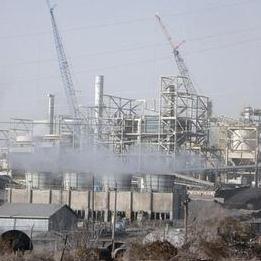 美國環保署日前首次對於波特蘭水泥廠製造業(Portland cement manufacturing )的汞排放、微粒汙染以及其他汙染物做出管控措施。波特蘭水泥廠是全美汞排放到空氣中的第三大來源。
美國環保署日前首次對於波特蘭水泥廠製造業(Portland cement manufacturing )的汞排放、微粒汙染以及其他汙染物做出管控措施。波特蘭水泥廠是全美汞排放到空氣中的第三大來源。
波特蘭水泥廠生產一般用途的水泥,如混凝土、水泥砂漿、灰泥、細灰泥等的基本原料。
美國環保署針對波特蘭水泥工業,通過有害氣體汙染物國家排放標準(National Emission Standards for Hazardous Air Pollutants, NESHAP)以及新汙染源執行標準(New Source Performance Standards)最新修正案。
美環保署8月9日公告的這項新規定,對現存水泥窯所排放出來的汞氣體設立了國家標準。他們加強限制新窯場並設立排放標準,這些措施將可減低酸性氣體。
新規定也限制了新窯場和現存窯場的微粒排放,並對新窯場的微粒以及會形成煙霧(smog)的氮氧化物與二氧化硫設限。
「全美國人民呼吸的空氣都受到汙染物質影響,尤其是孩童,他們更容易被這些化學物質傷害。」美國環保署官員莉莎傑克森( Lisa Jackson)說。
「聯邦政府致力於降低傷害我們健康的汙染物。隨著這個歷史關鍵行動,我們正往這個目標邁進。」她說,「降低我們呼吸的空氣中有害物質,我們阻斷發生氣喘的風險並且拯救生命。」
汞會傷害孩童發育中的大腦,微粒汙染導致嚴重健康問題,像是嚴重氣喘、心律不整、心臟病、以及患有心肺功能疾病患者早夭。
波特蘭水泥協會(Portland Cement Association,PCA)反對這項新規定,該協會是位在伊利諾州的工商團體。該協會贊同3月份倫敦國王學院( King's College)所發表的研究,研究發現,迫使水泥工廠遵守新法規將會導致離岸供應量轉移到中國,中國是全世界最大水泥生產國。
PCA表示,迫使生產轉移到其他法規不嚴謹或是低標準的國家去,全球工廠排放量和溫室氣體將會增加,這將使美國環保署促進潔淨環境的努力毫無效果。
環保署堅稱,當2013年全面實施,每年將可減低排放量如後:
- 汞:1.66萬磅或92 %
- 碳氫化合物總量:1.06萬噸或83%
- 懸浮微粒:1.15萬噸或 92%
- 酸性氣體:(以鹽酸計算)0.58萬噸或97%
- 二氧化硫:11萬噸或78%
- 氮氧化物:0.66萬噸或5%
空氣中的汞最終會沉積到水中,然後轉變為甲基汞,這是汞進入魚體內而形成的,是一種劇毒。人們接觸到汞的主要因素,是吃到遭受汙染的魚。
由於正在發育中的胎兒對於甲基汞的毒性非常敏感,孕齡期的婦女和兒童是最該受到注意的一群人。
For the first time, the U.S. Environmental Protection Agency is acting to control the emissions of mercury, particle pollution and other pollutants from Portland cement manufacturing, the third-largest source of mercury air emissions in the United States.
Portland cement is the most common type of cement in general use across the country because it is a basic ingredient of concrete, mortar, stucco and most non-specialty grout.
EPA is finalizing amendments to the National Emission Standards for Hazardous Air Pollutants, NESHAP, for the Portland cement manufacturing industry and to the New Source Performance Standards for Portland cement plants.
The final rules announced Monday set the nation's first limits on mercury air emissions from existing cement kilns. They strengthen the limits for new kilns, and sets emission limits that will reduce acid gases.
The rules also limit particle pollution from new and existing kilns, and set new-kiln limits for particle and smog-forming nitrogen oxides and sulfur dioxide.
"Americans throughout the country are suffering from the effects of pollutants in our air, especially our children who are more vulnerable to these chemicals," EPA Administrator Lisa Jackson said.
"This administration is committed to reducing pollution that is hurting the health of our communities. With this historic step, we are going a long way in accomplishing that goal," she said. "By reducing harmful pollutants in the air we breathe, we cut the risk of asthma attacks and save lives."
Mercury can damage children's developing brains, and particle pollution is linked to serious health effects, including aggravated asthma, irregular heartbeat, heart attacks, and premature death in people with heart and lung disease.
The Portland Cement Association, an industry trade group based in Illinois, opposes the new rules. The association agrees with a study published in March by King's College in London that found forcing cement plants to comply with the new regulations will shift some of the supply burden offshore to countries like China, the world's largest cement producer.
By pushing production to another country with less regulations and standards, the PCA argues, global plant emissions and lifecycle greenhouse gases will increase, negating the efforts of the EPA to foster a cleaner environment.
The EPA maintains that when fully implemented in 2013, annual emissions will be reduced by the following amounts:
- Mercury: 16,600 pounds or 92 percent
- Total hydrocarbons: 10,600 tons or 83 percent
- Particulate Matter: 11,500 tons or 92 percent
- Acid gases: (measured as hydrochloric acid): 5,800 tons or 97 percent
- Sulfur dioxide (SO2): 110,000 tons or 78 percent
- Nitrogen oxides (NOx): 6,600 tons or five percent
Mercury in the air eventually deposits into water, where it changes into methylmercury, a highly toxic form that builds up in fish. People are primarily exposed to mercury by eating contaminated fish.
Because the developing fetus is the most sensitive to the toxic effects of methylmercury, women of childbearing age and children are regarded as the populations of greatest concern.
全文及圖片詳見:ENS報導







